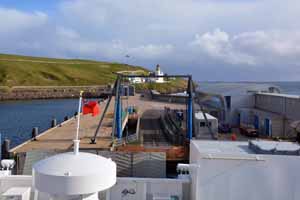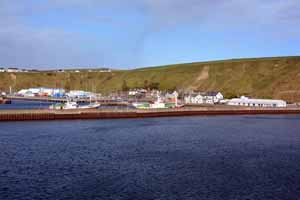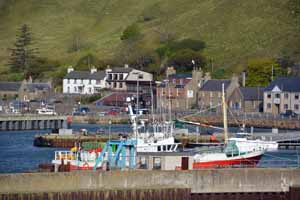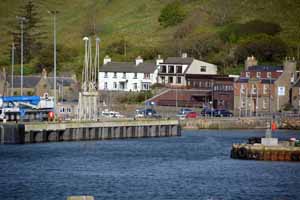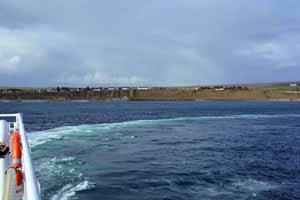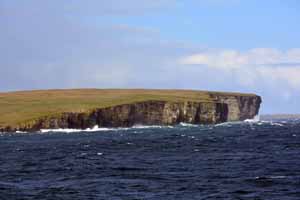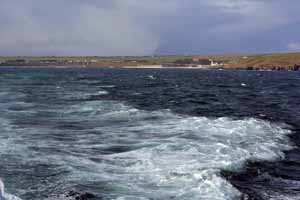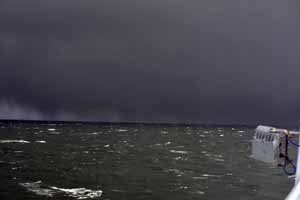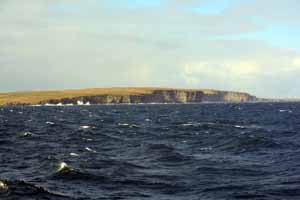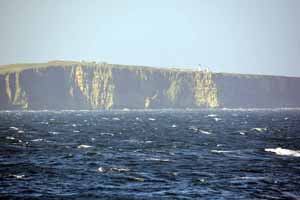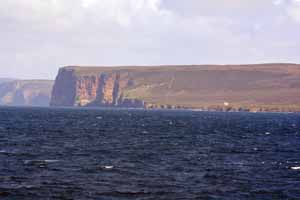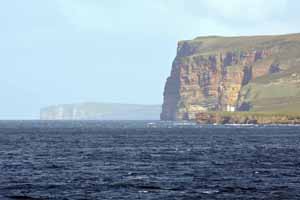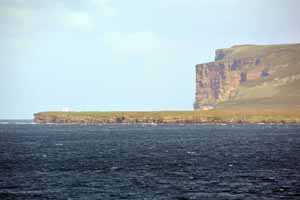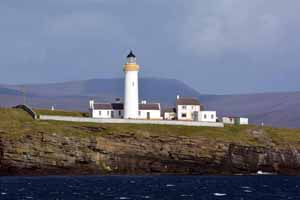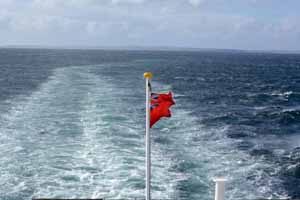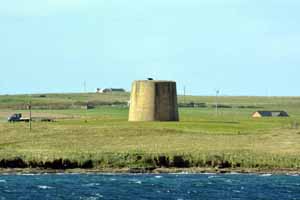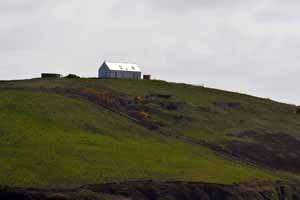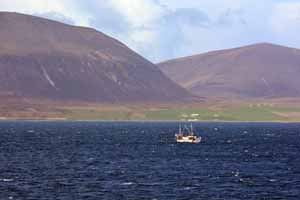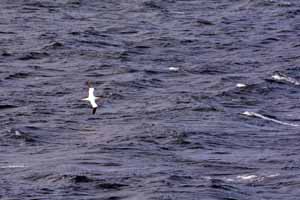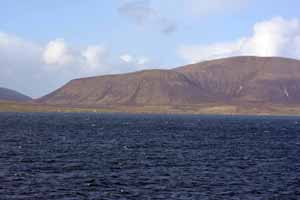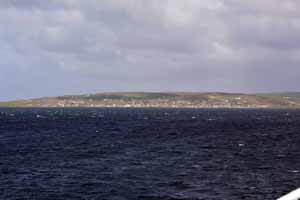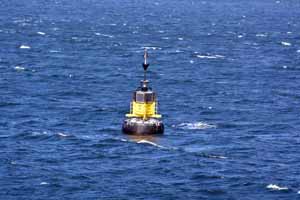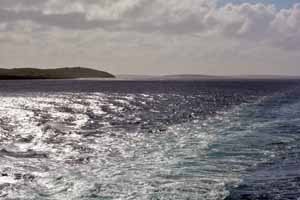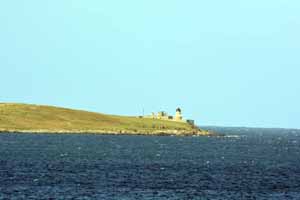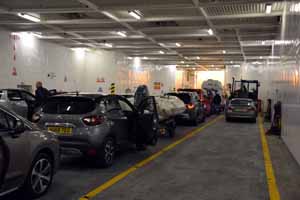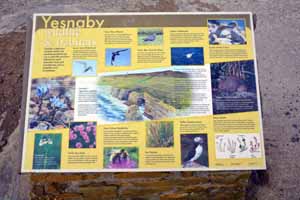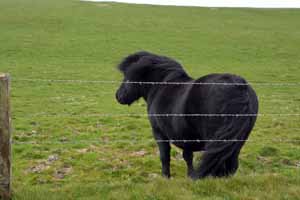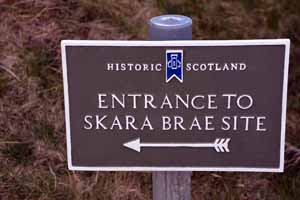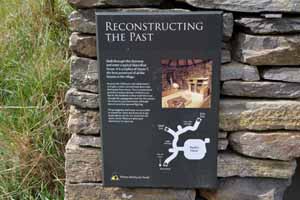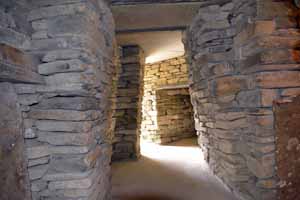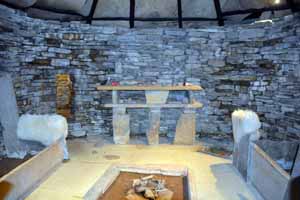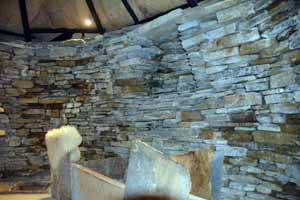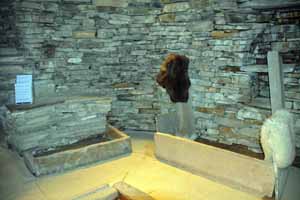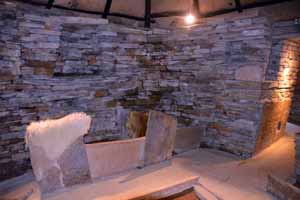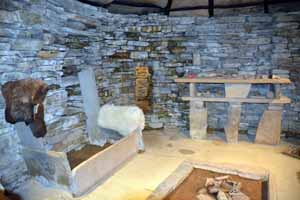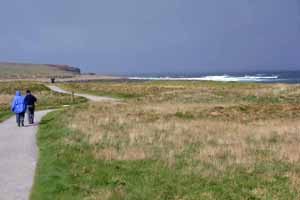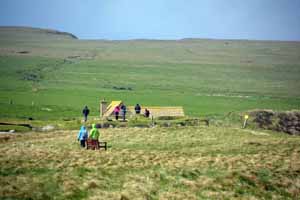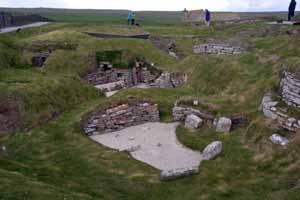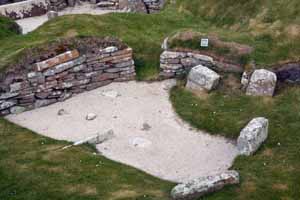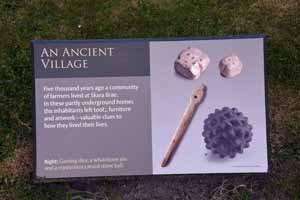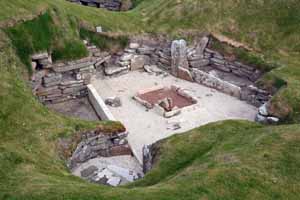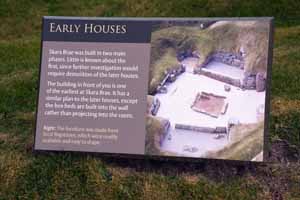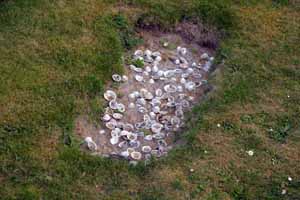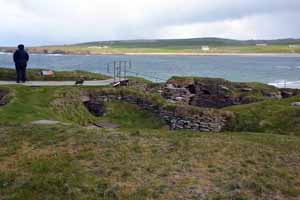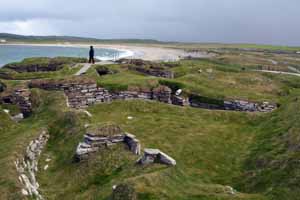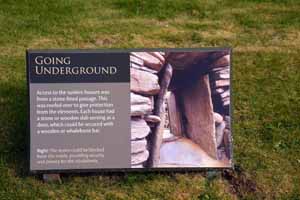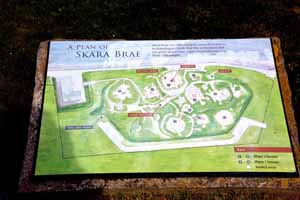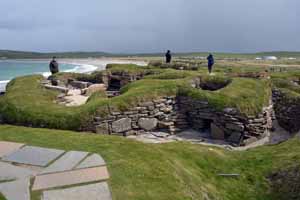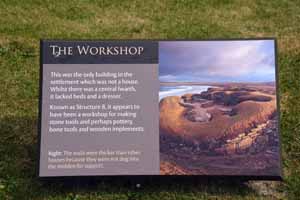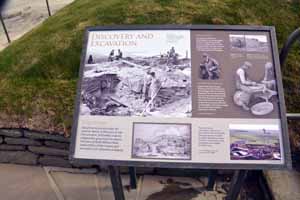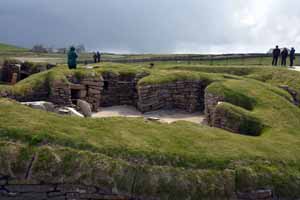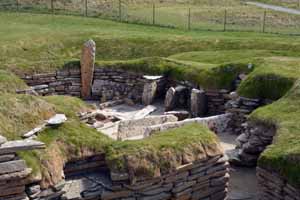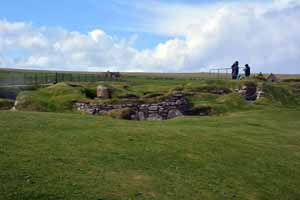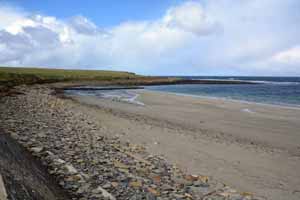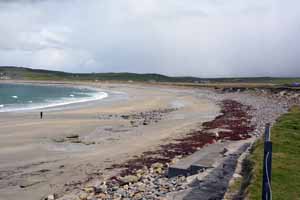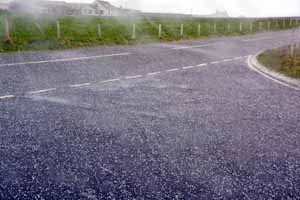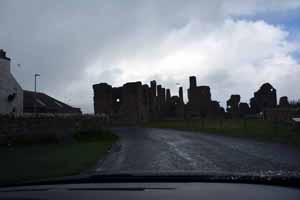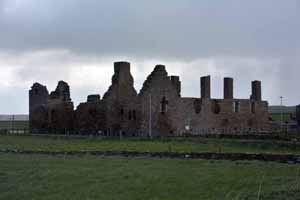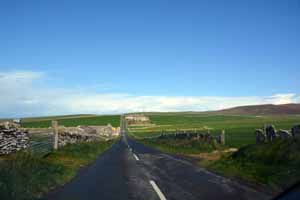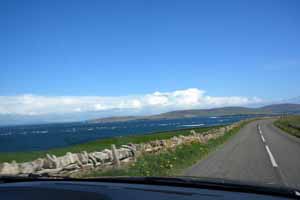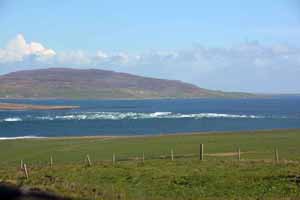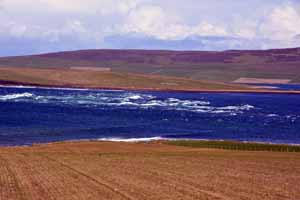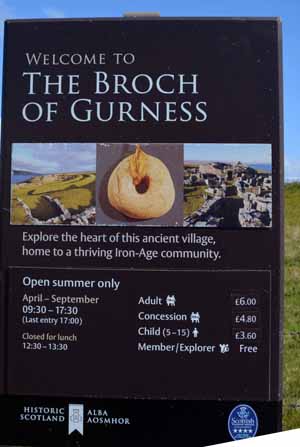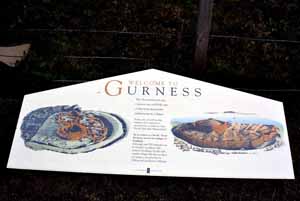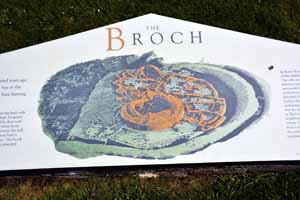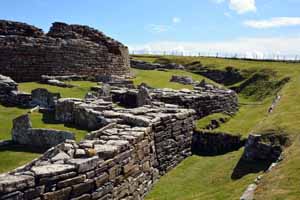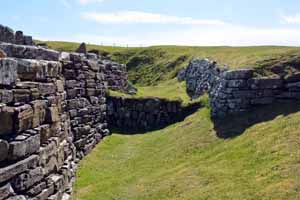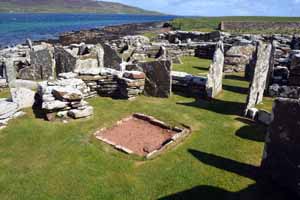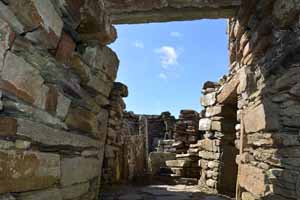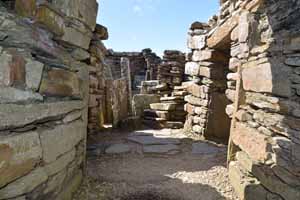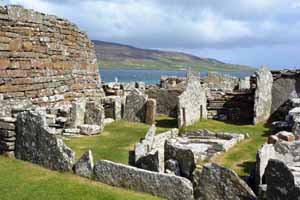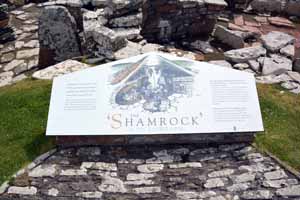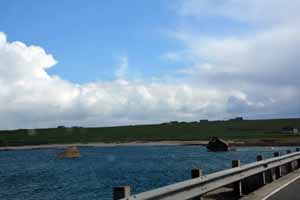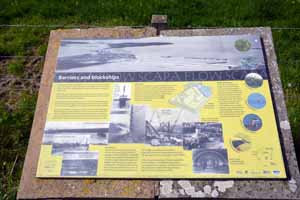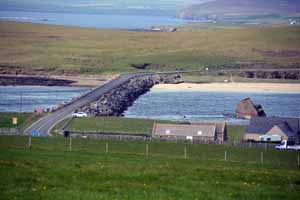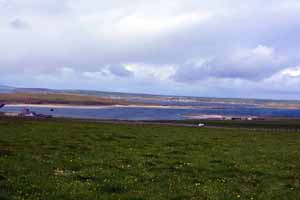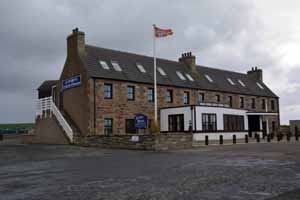Orkney & Shetland 2019 - Day 9Ferry from Scrabster to Stromness then Skara Brae on OrkneyThe RORO ferry departs Scrabster for Stromness on Orkney at 0820, final check in 20 minutes prior. The termina is 2 minutes drive from the Ferry Inn wherer we stayed the night. Only a half full ferry this mornng, but the wind was up a bit and the sea rough. The usual route for the ferry is to the west of Orkney and the island of Hoy and then into Scapa Flow to Stromness. Today however the captaindecided the sea was a bit too rough so he took the inside passage, threading his way between all the snall islands. This meant we missed the view of the Old Man of Hoy. Once at Stromness we headed north across Mainland towards the renowned archeological site of Skara Brae. After walking the site and being blasted by sleet, we drove north around the top of the island and on to the Iron Age Gurness Broch. It was cold and windy here also so we headed through Kirkwall, across the Churchill Barriers and on to our hotel for 2 nights. Ferry from Scrabster to StromnessThe early morning ferry took us north to Stromness, a port on the western side of Mainland, Orkney. We had to agree with the captain that the weather was "not the best" whent he ferry was hit by large swells and heavy driving rain. But all this cleared by the time we departed on Orkney. Skara BraeSkara Brae is a stone-built Neolithic settlement, located on the Bay of Skaill on the west coast of Mainland. It is particularly well preserved, consisting of eight clustered houses. It was occupied from roughly 3180 BC to about 2500 BC and is Europe's most complete Neolithic village. Skara Brae is older than Stonehenge and the Great Pyramids. It has an excellent visitor's centre and a reconstruction of one of the houses. We found the cafe one of the better places we visited, with the hot Cullen Skink soup particularly welcome after walking around the sight in near-zero Celcius conditions.
Around the north coast to Gurness BrochAfter a warming lunch at Skara Brae we contined our drive north around the coast, passing Birsay and the Loch of Swannay before turning off at Evie. The map showed a good road from Evie, down to the public toilets and then around the bay to the Broch, before circling back to the A966. However... at somemore recent time the other half of the circle had become the preferred route and the section of the road we took had a fantastic collection of potholes that made the track almost impassable. We did eventually arrive at Gurness Broch, but again the wind was strong and the temperature at close to freezing - nice sunny day though!
Gurness BrochGurness Broch is an Iron Age broch village, built around 500 to 200 BC. It is a complex village of small stone dwellings with small yards and sheds. It is surrounded by three ditches.
Churchill BarriersFrom Gurness Broch we followed the main road to Kirkwall and then on across the islands of Lamb Holm, Glims Holm and Burray to reach the Sands Hotel. The road to each island crosses over the Churchill Barriers, causeways built of concrete blocks during the early 1940s to protect the Royal Navy anchored in Scapa Flow. The first attempt to block the channels using sunk ships (block ships) was only partly successful as the german submarine U-47 entered Scapa Flow and sunk the battleship HMS Royal Oak.
The Sands Hotel accommodationThere did not appear to be a good range of accommodation in Kirkwall, so we decided to stay the first two nights on Orkney at The Sands Hotel on the island of Burray. This hotel is a few miles south of Kirkwall but was well-placed to visit the southern sites on South Ronaldsay. We found the hotel to be an excellent choice, fully living up to its good online reviews. The food at dinner and breakfast was excellent. In hindsight we should have stayed here for our full time here rather than moving into Kirkwall on the Sunday.
Last updated: 16/06/2019 |
